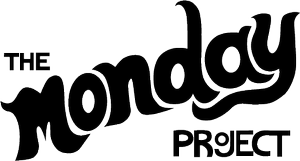EXPOSITION PARK, home to the Science Center and Natural History Museum which, together, celebrate the weird and incredible universe we live in.
The history of man is hung on a timeline of exploration - we came out of the cave, and we looked over the hill and we saw fire; and we crossed the ocean and we pioneered the west, and we took to the sky; we sent 12 men to walk the moon and we discovered water, the essential ingredient of life, on the martian planet.
[Note: the above is a shameless bastardization of a West Wing quote]
Both museums are love letters to science. Now the Monday Project girls fall more cozied under the umbrella of “artist” than they do scientist. But damn, if science isn’t sexy and poetic in its own right. And, judging by the space suits on display at the Science Center, astronauts are too. The suits suggest they all have very taut little butts. In actuality, these guys (guys colloquially, as in guys and gals) are PhD’s with the bodies of world-class athletes.
The Science Center has all sorts of cool science-y stuff. There’s an entire exhibit on kelp that actually makes kelp interesting. There’s a starfish petting zoo. For $2 you can put yourself and your best friend inside a glass encasement and feel what it’s like to be in a hurricane.
The golden exhibit at the Science Center is, hands down, the stuff about space. Included in that is the space shuttle Endeavour. Inside an airplane hanger you can stand under the space shuttle Endeavour. Like it’s the actual shuttle that’s been to actual space. It’s been to space 25 times, in fact, and it was the second to last shuttle to ever exit Earth’s atmosphere under NASA’s space shuttle program as of 2016.
Fun Fact: If you’re wondering why Endeavour is spelled the British way, it’s because the shuttle is named in honor of the HMS Endeavour, the ship that took explorer James Cook on his first expedition.
The Science Center also has an IMAX theater.
When you’re done exploring the Science Center, head to the gift shop and get yourself some astronaut ice cream (Neapolitan flavor, recommended). Enjoy it while you walk through the Exposition Park Rose Garden. Afterward, make your way to the Natural History Museum.
Now, the NHM is cool for several reasons. Among them is that it’s constantly hosting special events. The first Friday of every month from February - June the NHM presents a KCRW-hosted music event, which means visitors get to stay late at the museum and listen to DJ’s, special music guest and scientist-led talks.
On just regular old days, the museum has halls worth of taxidermy animals - some still roaming the earth, some long since extinct - that look outrageously real. In the recently redone dino exhibit, Triceratops and T-Rex skeletons tower over you. There’s an area, called the Dino Lab, where you can watch real scientists work on excavated bones.
Parts of the museum look they haven’t been updated since the 70’s. The Bird Hall is conservatively colored, lots of taupe and deep burgundy. The birds are all cluttered behind glass encasements. But, hey, it’s still cool.
There is always as special exhibit going on. At the time of this post, it’s Mummies.
Take Note
The Science Center is free to visit, excluding special exhibitions and IMAX.
Click here for a link the ticketing for The Natural History Museum:
http://www.nhm.org/site/plan-your-visit
An awesome perk, you can very conveniently take the metro to get here! The Expo/USC station off the Expo line is right across the way. If you must drive, It costs $10 to park in the lot at Exposition Park. Free street parking is also available. But don't forget to look at the signs for parking restrictions.
Exposition Park is also home to the California African American Museum, which we’ll going to on another visit.






























































